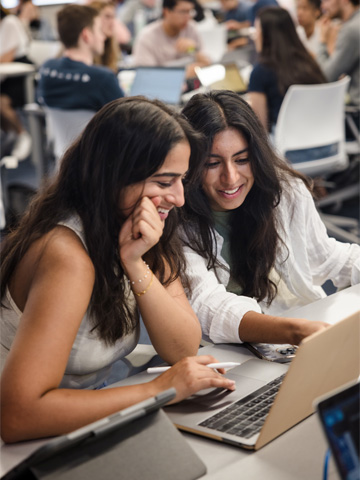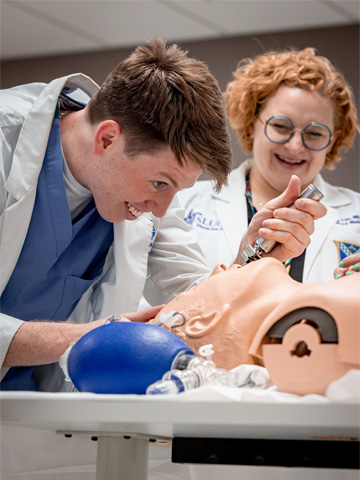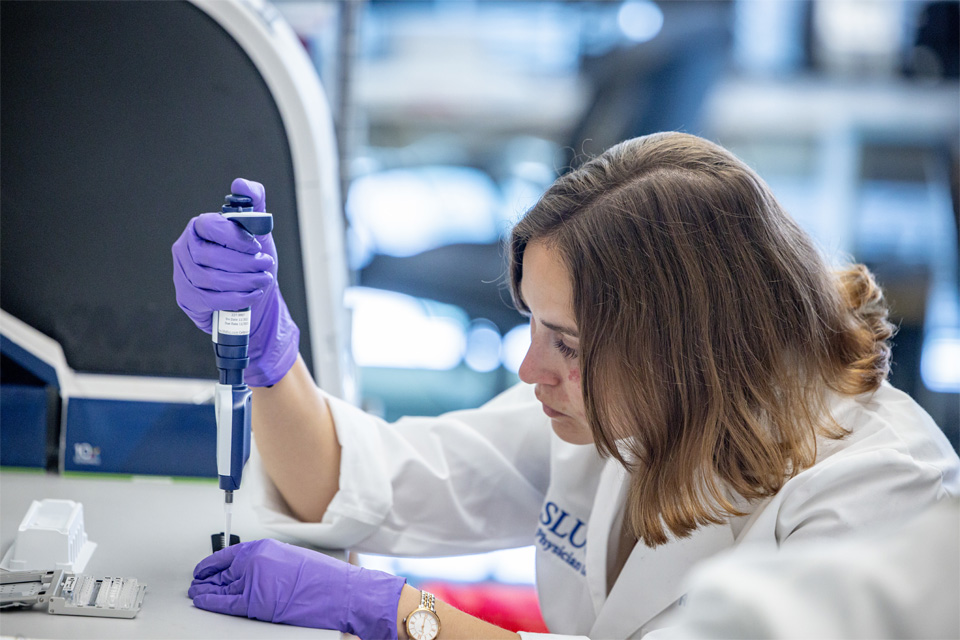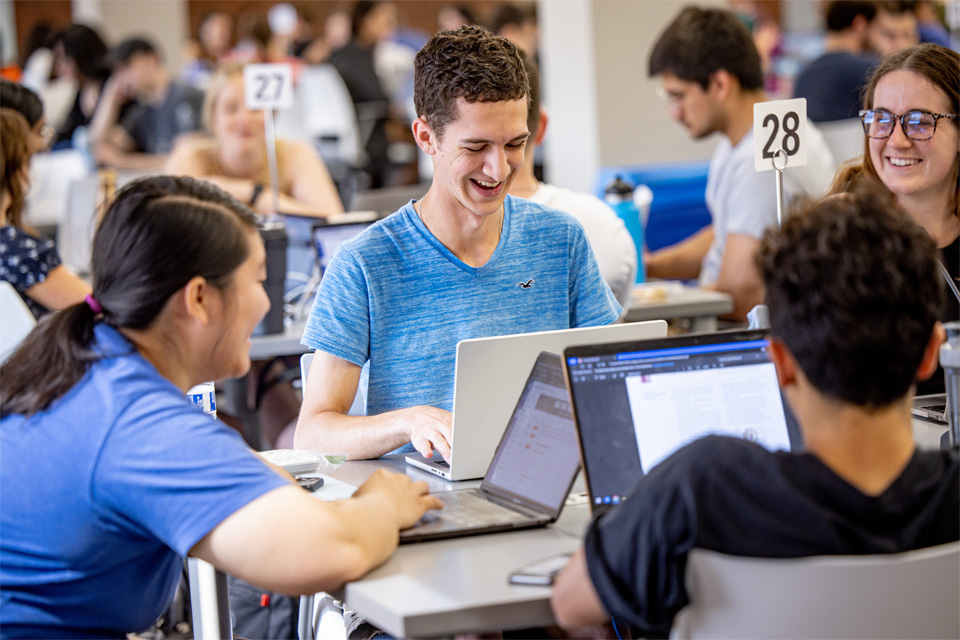Innovation Grounded in Tradition
Advances in medicine play an integral role in shaping our future physicians for transformative positions within their fields. With today’s innovations in technology, emerging areas of study, and continued emphasis on team collaboration, a learner-centric curriculum propels Saint Louis University School of Medicine into a new era.
The School of Medicine’s curriculum pivoted to modernize and inspire an ongoing passion for patients among the next generation of physicians. Chad Miller, M.D. FACP, SFHM, senior associate dean for undergraduate medical education and professor of internal medicine, led the charge to create the three pillars of medical education: basic science, clinical science and health systems science. Each pillar gives medical students critical knowledge of the structure and function of the human body, hands-on collaboration opportunities through active learning, and a holistic approach to patient care.
As the future of medicine evolves, our curriculum promotes a compelling, long-lasting outlook for the education and future success of our physicians.
A Foundation for Active Medical Education
The foundational phase of Saint Louis University School of Medicine is shifting from passive learning towards an active learning environment that emphasizes exposure to clinical thinking and focuses less on traditional lectures.
As the associate dean for preclerkship curriculum, Johan Bester, M.B.Ch.B., Ph.D., M.Phil, is tasked with leading the changes and laying the foundation for the future. With the goal to help medical students develop into ethical, skillful, and knowledgeable physicians, he and the school have adjusted the curriculum to be in line with how SLU’s students best learn.
“We’re incorporating exciting and innovative learning methods where students work in teams, actively apply knowledge, and apply concepts in clinical cases,” Bester said. “When we get students in class, they are actively learning and collaborating. In between these sessions, students have time for independent study and access to resources under faculty guidance.”

The preclerkship phase is designed to develop the core knowledge of first- and second-year medical students by teaching the fundamentals of biomedical sciences that are necessary for medical practice. Building on the work of his predecessor as associate dean, Lynda Morrison, Ph.D., Bester is moving the pre-clerkship curriculum to a foundation of active learning, where students learn by working in teams, putting lessons into action, and gaining early clinical exposure.
“We are going through this phase of change now, and it is changed for the better,” he said. “In many ways, we are aligning our strengths, the values of a Jesuit education, and our storied history to take advantage of these new ways of learning and doing for the benefit of our students.”
Through his team's ongoing efforts, he and his colleagues teach medical students how to think, feel, and reason as physicians from the very beginning of their education.
Health Systems Science: Preparing Students for the Future
Health systems science focuses on how medical care is delivered, how medical professionals work together to deliver care, and how the health system can improve patient care and health care delivery.
Courses include Health Care Ethics, Epidemiology and Biostatistics, Patient Safety and Quality Improvement, Medicine and Society, and Mathews’ own course, Leadership in the Business of Medicine sponsored by the Bander Center for Medical Business Ethics.
“Health systems science looks at the whole person in the context of their lived experiences. It considers the broader social, structural, and financial factors that affect access to care. It also helps students understand the broader healthcare ecosystem in which they will work, and it prepares students to collaborate in interprofessional teams.”
Mathews’ course introduces students to a core small group in their first year of medical school that meets throughout their time at SLU. Structured group discussions help students understand different perspectives, develop their own professional ethics, and strengthen critical interpersonal and collaborative skills. Additionally, these small groups offer trusted spaces where students can engage in thoughtful conversations about society’s impact on medicine and their future place within the profession.
“These courses help students understand the broader context in which they work — whether it be financial, social, cultural, or organizational,” she said. “We seek to prepare students and help them understand that patient care never happens in a vacuum … We have to be present to the patient ‘in the room’ and be aware of everything that happens outside the room for that patient and for ourselves.”
The Bridge Between Clinical Environments
Simulation experiences are an important facet of medical education — encouraging students to develop their decision-making skills, improve their clinical reasoning, and reflect on the case at hand. When Tina Chen, M.D., was appointed associate dean of simulation in June 2018, she had a goal of presenting these hands-on simulation experiences to students earlier in their medical education.
“When you encounter a patient, there can be many things going on with them,” Chen said. “Being able to extract some sort of structure out of those disparate pieces of information and having an approach to creating order out of uncertainty is an important skill for our students to learn.”

The Saint Louis University School of Medicine Simulation Center promotes hands-on learning and team-based live training through physical simulation scenarios using rubberized full-body human simulators. Faculty members are trained to educate the students on procedures, while also giving space to make their own modifications after reflecting on their thought processes.
“This is not an unidirectional way of education — it is intended to be bidirectional to facilitate conversation between clinical faculty and students,” she said. “It also results in opportunities for students to think about actions, reflect on them, and make resolutions to change them in future clinical settings.”
The center is also a space where students have an element of psychological safety. Chen explained that while medical school is a challenging environment, it’s essential that students grow, learn, and experiment confidently before they enter a hospital.
“Simulation is a wonderful bridge between the preclinical environment and the clinical environment — and then it’s another bridge between clinical and residency,” she said. “It is so valuable because it focuses on creating a psychologically safe environment in which to test our students’ clinical reasoning.”

